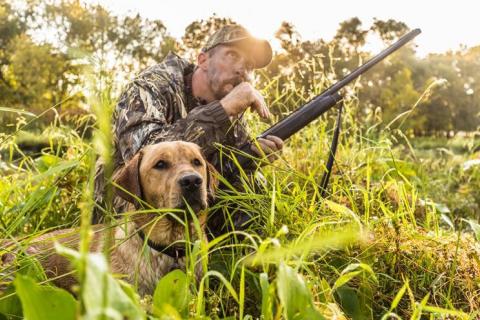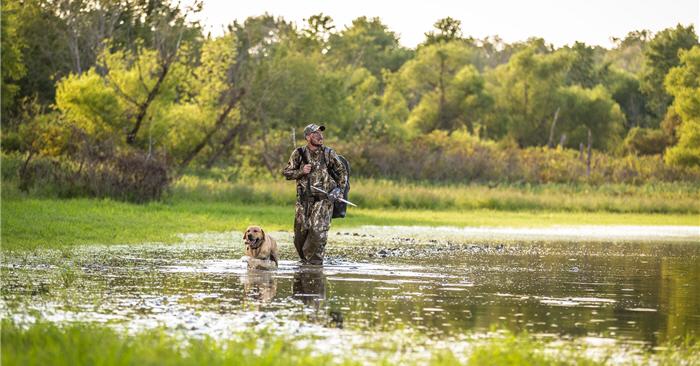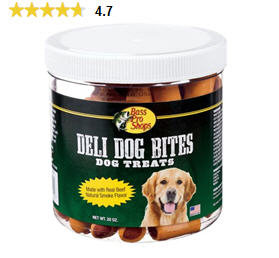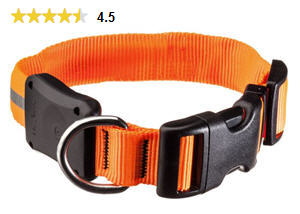
When you watch a hunting dog go about that which it was born and bred to do, it’s not hard to imagine the canine is covering 10, 20, or even 30 times as much ground as its two-legged hunting partner. A huge part of the advantage of hunting with a dog is its ability and willingness to go places the human hunter can’t, or at least doesn’t want to, go. The trust between hunter and dog, fostered by training and success, becomes an ironclad bond.
So while the hunting dog – whether hound, retriever, or bird dog – pursues the game with no inhibitions, it places total faith in its human partner for judgment and safety. It’s the human hunter’s huge responsibility to exercise planning, forethought, and discernment to provide for the dog’s safety.
 |
| The most important “tool” for keeping a hunting dog safe is solid obedience training. |
It is, indeed, a massive responsibility, and directly proportional to the abandon with which the dog pursues its game and the number of dogs you decide to bring into your life. Thankfully, there are ways and products that can assist in keeping your dog(s) safe while hunting.
 1. Keep a Hunting Dog Safe With Obedience Training
1. Keep a Hunting Dog Safe With Obedience Training
The most important “tool” for keeping a hunting dog safe is solid obedience training. Any dog that is out of control – in the field or at home – is a danger to itself and those around it. The more control you have over your dog, the greater your ability to keep it out of dangerous situations.
At the very least, a hunting dog must come reliably when called in virtually any situation. For the experienced hunter, it’s not difficult to picture a bird dog flushing a rabbit or even a deer from cover. The dog’s natural instinct is to chase. What happens if the prey crosses a busy road with the dog in hot pursuit? It can be very, very bad, and it happens all the time. Or let’s change the dog’s unexpected discovery to a rattlesnake, porcupine, or skunk. If you can’t call the dog off, the results of such an encounter can range from fatal to extremely inconvenient.
 |
| Bass Pro Shops Deli Dog Bites Dog Treats |
As the upright-walking hunting partner, your responsibility is to be the eyes and ears of the partnership – to look ahead and take action to prevent problems before they happen – while the dog focuses nearly exclusively on what’s right under its nose. But this only works if the dog can sense (hear, see, feel) your commands and will respond to them.
“Whoa” means to stop immediately in place, so its importance is equal to coming when called. Those are the bare minimums, but with the addition of reliable obedience to more commands comes greater margin of safety. Hunting dogs should also be trained to “sit,” “stay” and “heel.” Another command that’s often neglected is “drink.” While it’s not technically obedience, it’s important to teach your dog to hydrate when you tell it to, because they won’t do it naturally.
This isn’t the place to go into “how” to obedience train your hunting dog, only to drive home how important it is to your dog’s safety and well-being, and offer some of the tools you’ll need to get the job done. Check out the following eight items used for obedience training the hunting dog.
 2. Your Hunting Dog Needs Protection From the Surroundings
2. Your Hunting Dog Needs Protection From the Surroundings
The habitat in which the game we pursue lives ranges from rugged to “are you insane?” When alerted or wounded and trying to hide, prey will head to the middle of the worst of it.
While we gird your loins in layers of cotton duck, Kevlar and bull hide and then tiptoe in, our canine companions run through this stuff – face first – all day long. Our feet are clad in centuries of design refinements and chemical engineering. The dog has its pads and claws.
And think about the retriever. It happily dives into water that’s frigid just short of solid to pursue birds whose sole mission is to evade, evade, evade. Long swims in cold water shorten the active life of the heartiest Labs and Chessies, let alone breeds lesser built for it.
 |
| Cabela's Advanced Dog Flotation Vest |
The best protection from these problems is the intelligence and good judgment of the master. If the situation causes you concern, call your dog out of it. For the times when you can’t, then there is gear that can save lives, longevity, discomfort, and inconvenience. Check out the following nine items designed for protection just for the hunting dog.
 3. Make Your Dog as “Loss-Proof” as Possible
3. Make Your Dog as “Loss-Proof” as Possible
No matter how careful you are, no matter how hard you try to avoid them, there are going to be situations in the field, and even at home, when your partner is going to be out of sight. 99.999 percent of those situations will resolve just fine – the way in which you’d expect them. But for that one in one hundred thousand, you’ll end up kicking yourself for not doing everything you could have. Hopefully, karma will only deal you a sleepless night or two rather than a rest-of-your-lifetime not knowing what happened.
To prevent those situations, there are steps you can take to make your dog as “loss-proof” as possible.
A microchip about the size of a grain of rice, implanted under the skin between the dog’s shoulders, instantly becomes a permanent identification tag. It’s as simple as administering a routine vaccine. No anesthesia is required.
Unlike a collar, an implanted microchip can’t fall off, be easily removed, or become unreadable. When a lost dog is found and taken to a shelter, agency, vet clinic, or law enforcement it will be scanned to see if it has been chipped. The information from the scanner will be called into the pet recovery service with which you registered the chip, and they will contact you so you can claim your lost dog. It’s inexpensive insurance to bring your dog home. If your dog is a purebred you’ll consider breeding, some health certifications require chipping to permanently prove the dog’s ID.
![]() Tip: HomeAgain – A national pet recovery database of pet microchip ID numbers. A lost pet’s best chance
Tip: HomeAgain – A national pet recovery database of pet microchip ID numbers. A lost pet’s best chance
 |
| Nite Ize Nite Dawg LED Dog Collar |
In addition to microchipping, all dogs should still wear collars imprinted with their name, the phone number of the owner, and a tag indicating the dog is chipped. Vaccination tags are a good idea, too. Just remember that cover in which the dog will be working. Anything hanging from a collar can be stripped off pretty easily.
If you’re separated from you dog, a high-visibility reflective dog collar is especially important. It gives you the best chance of spotting your dog and will help drivers see it should the dog cross a road particularly after dark.
 |
| Ruffwear Load Up Vehicle Restraint Harness for Dogs |
Today, there are also electronic dog collars that incorporate GPS tracking technology. As long as the battery has energy for the unit to provide a signal, the collar can allow you to pinpoint the position of your dog – even miles from your current location. Check out the Dogtra Pathfinder E-Color GPS and Tracking Dog Collar at Bass Pro Shops here.
At home or at the hunting cabin, there are now a wide variety of electronic containment systems that require no fence like the PetSafe Stay & Play Wireless Fence. With a bit of familiarization training, these systems are tremendous insurance your dog will stay where it’s supposed to stay.
Safety is also a concern on the road in a vehicle traveling with a dog. Some of the best options is vehicle restraint harness for dogs. The Ruffwear Load Up Vehicle Restraint Dog Harness is a popular item for those who want to keep their pets safe and secure while riding in the car or truck. The dog harness is comfortable enough for extended wear, and can be left on the dog for short walks and rest stops.
How to Fit and Install the Ruffwear Load Up Dog Harness - Quick Start Video
Conclusion
When it comes to keeping your hunting dog safe, it he or she deserves the best; you deserve the best; and your partnership deserves the best. With the right techniques, training, and equipment you can enjoy many happy and healthy years in the field … together.
- 3928 views

